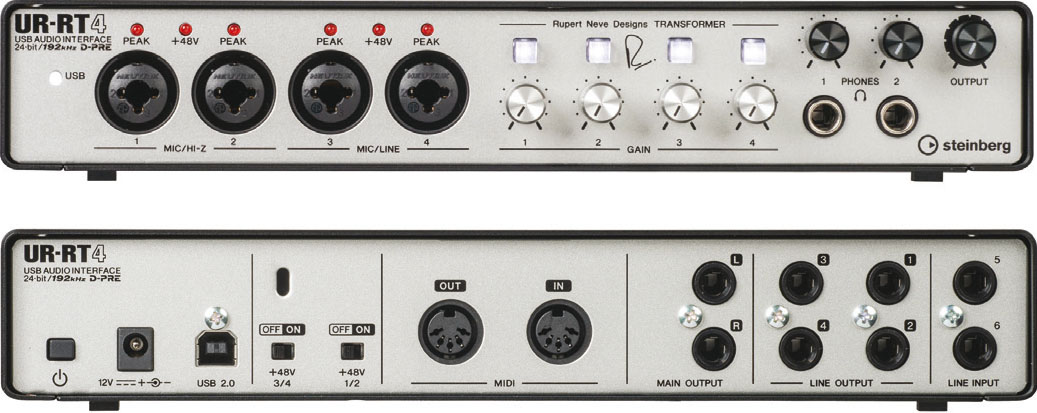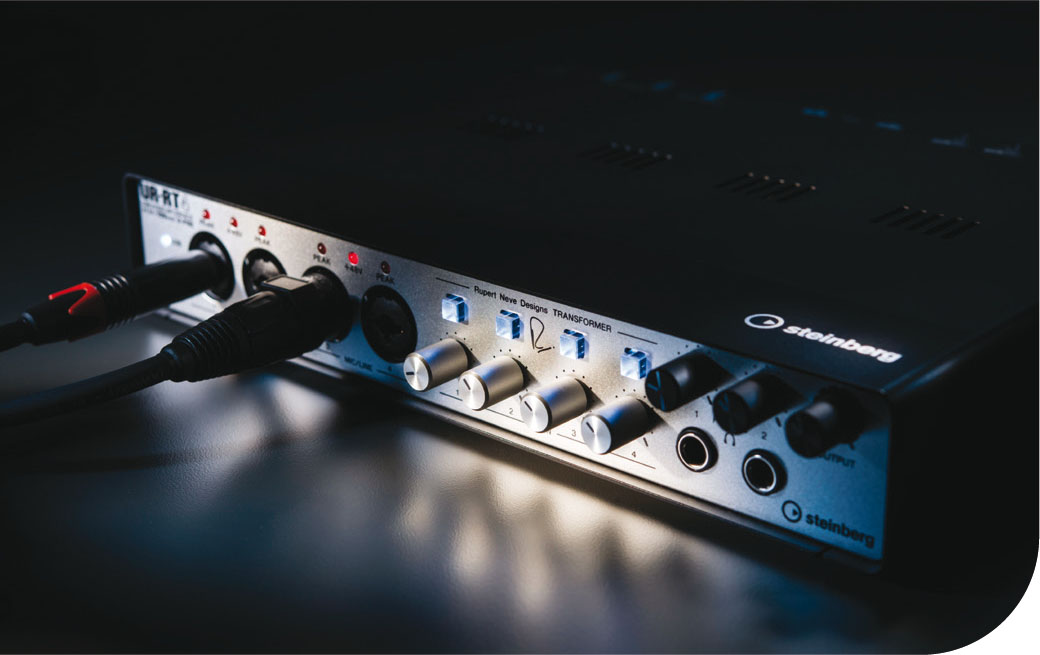
I have used a number of Steinberg interfaces over the years and I have been very impressed by them. I still have my entry-level UR22 as a simple mobile recording interface. I have found Steinberg's products to be well built, easy to use and, most importantly, they sound great.
First impressions
The first thing I noticed was the weight of this interface. Despite what Steinberg says, this is not an easily portable interface! You are not going to be throwing it into your backpack to quickly track something. Although you could transport it, it's better suited to sitting on a desk because those transformers are quite heavy. The installation process was relatively easy – but it did require installation from a CD which I found tricky because none of my machines now have a CD drive. The disc installs all the relevant software including Steinberg's dspFX latency-free monitoring software. This allows users of Cubase and most other DAWs to access the interface's on-board DSP chip to provide basic effects for tracking without requiring the DAW to provide it.
Track and trace
I used the UR-RT4 an awful lot while I had it, and recorded a large amount of music for some live recording that my wife and I were doing. Connections to the computer were made via USB and the inputs all accept either XLR or jack via a combi-socket. Because of the transformers, the interface requires mains power for all use and can't be bus-powered. This was never a problem for anything I was doing, but might limit location recording applications.
When recording, I tracked two dynamic microphones and a condenser on an acoustic guitar. Each channel has a dedicated gain control and phantom power is selectable for each pair of channels. The Rupert Neve transformers are selected by a button above the gain knob. The transformer adds some additional harmonic distortion and creates a warmer sound than you hear with it disabled. The standard Yamaha preamps that are included in the interface sound very, very good, but as I've found with a lot of Yamaha pre-amps, they can be quite bright. The Rupert Neve transformers tame this a little bit and add some grit. There are another two jack sockets on the back for inputs 5 and 6 if needed – but nothing I was recording at home required this many inputs simultaneously.
Professional playback
The output of the UR-RT4 is exceptional. I have used a range of interfaces with very high-quality digital to analogue converters and the Steinberg interface stands up to them quite easily. Obviously this is to be expected for a relatively high-end interface, but it's pleasing to know that Steinberg hasn't skimped on one feature at the expense of another.

The transformers are activated by buttons on the front panel
‘Perfect for schools that need something that can handle multiple sources’
There are two independent headphone outputs, which was great for dual monitoring while recording; it meant I could have the metronome blasting but my wife didn't have to! After my first recording, during the mix process I could listen back to the capture of the signal both with and without the Rupert Neve transformers. My personal feeling was that I prefer the transformer on for my guitar sound and off for my wife's vocal – simply due to the different timbres. This is, of course, why Steinberg has included the option to route the signal via the transformers or not. Not everything is going to sound better with them – sometimes the purity of the signal needs to shine through. (If I'd had access to the college studios while I was reviewing the interface I'd have loved to hear the interface handle a wider range of sources such as kit and electric guitar. But, obviously due to lockdown, this wasn't possible.)
Educational uses
This is a relatively premium interface and isn't going to be suitable for every computer in a suite in schools. However, most school studios are now eschewing the large format mixing desk in favour of medium-sized interfaces like this. This interface would be perfect for schools that need something that can handle multiple sources but that doesn't reduce the quality in exchange for more inputs. The UR-RT4 could easily handle a basic 4-mic drum kit capture – and I'm sure those Rupert Neve transformers would sound great on kick and snare.
This is an interface around which a small project studio could be built – everything that it does, it does well. There are lots of 6(ish) input interfaces available on the market, so to create something that stands out from the crowd is important. Steinberg has done that with the UR-RT4 and the addition of the Rupert Neve Designs transformers turns the perfectly good interface into something exceptional.
Steinberg UR-RT4 retails at £486. Find out more at steinberg.net








